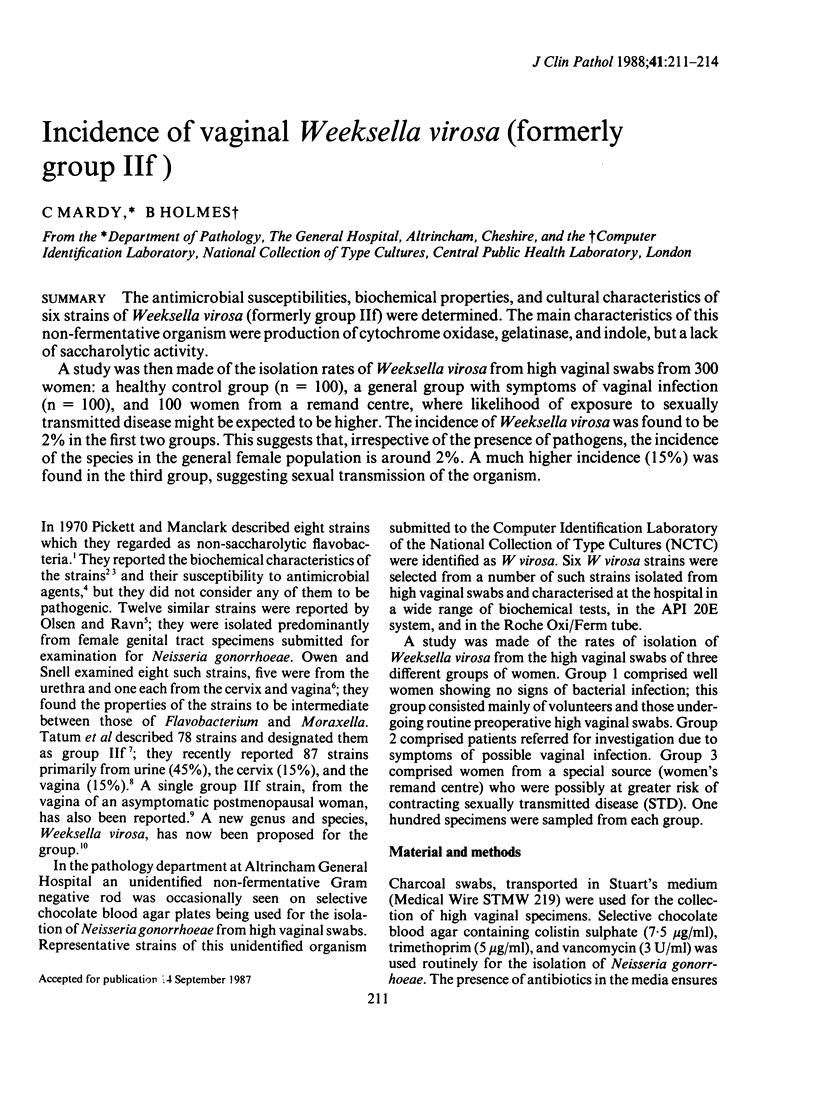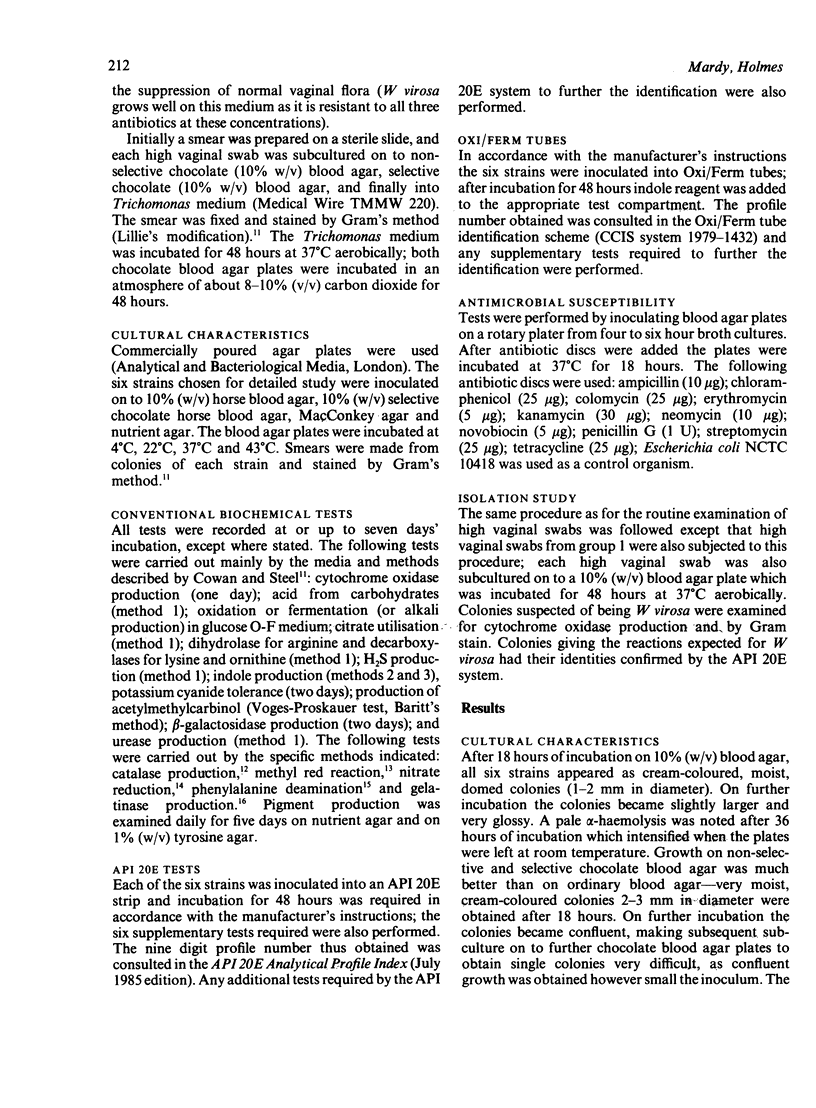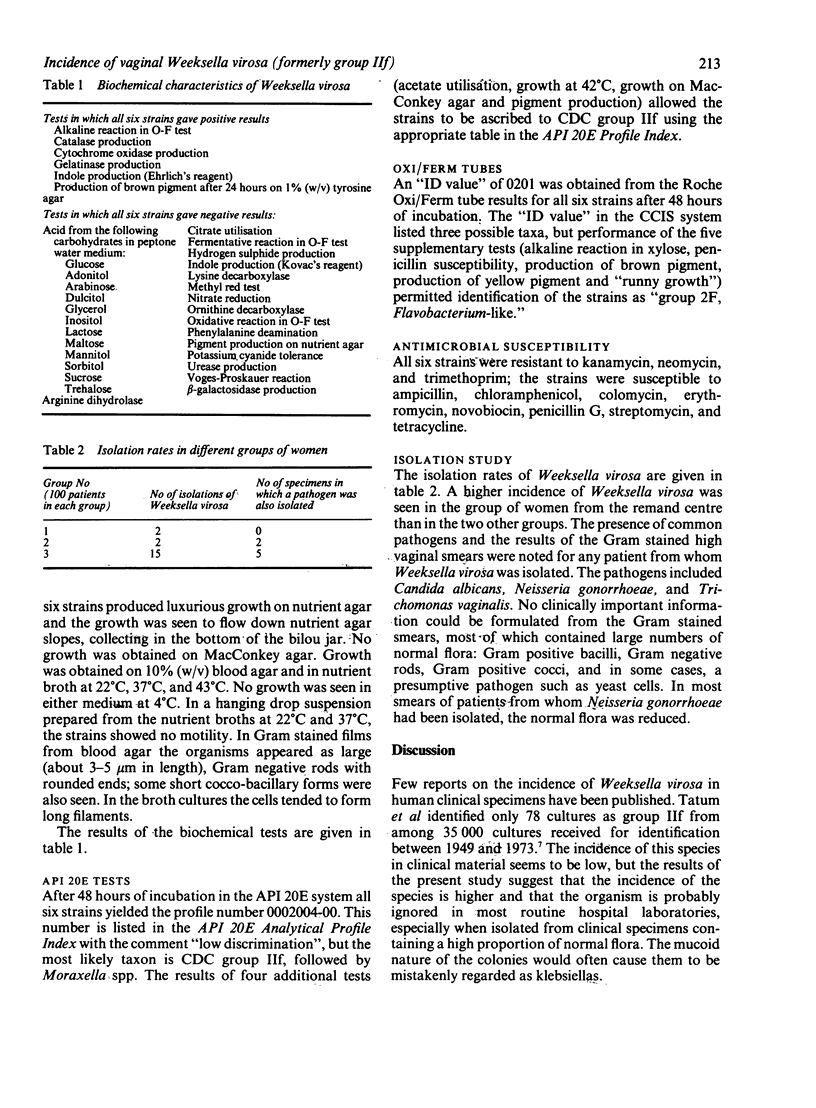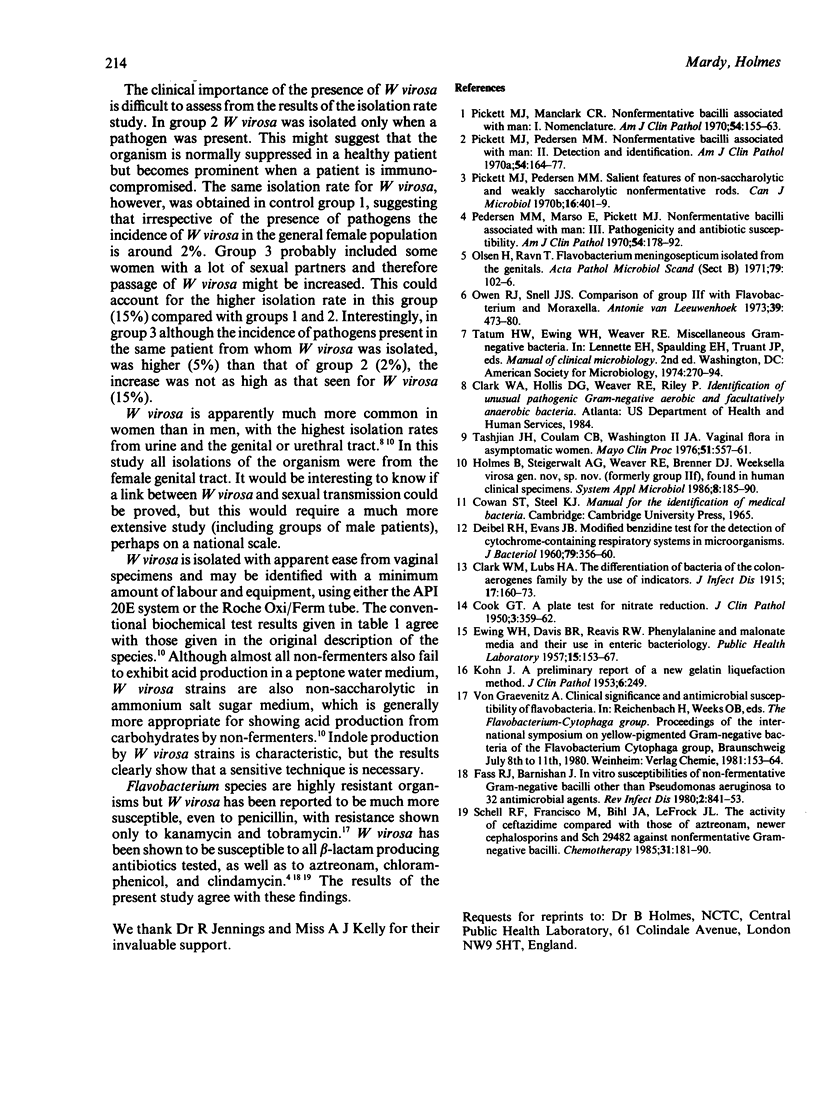Abstract
The antimicrobial susceptibilities, biochemical properties, and cultural characteristics of six strains of Weeksella virosa (formerly group IIf) were determined. The main characteristics of this non-fermentative organism were production of cytochrome oxidase, gelatinase, and indole, but a lack of saccharolytic activity. A study was then made of the isolation rates of Weeksella virosa from high vaginal swabs from 300 women: a healthy control group (n = 100), a general group with symptoms of vaginal infection (n = 100), and 100 women from a remand centre, where likelihood of exposure to sexually transmitted disease might be expected to be higher. The incidence of Weeksella virosa was found to be 2% in the first two groups. This suggests that, irrespective of the presence of pathogens, the incidence of the species in the general female population is around 2%. A much higher incidence (15%) was found in the third group, suggesting sexual transmission of the organism.
Full text
PDF



Selected References
These references are in PubMed. This may not be the complete list of references from this article.
- Cook G. T. A Plate Test for Nitrate Reduction. J Clin Pathol. 1950 Nov;3(4):359–362. doi: 10.1136/jcp.3.4.359. [DOI] [PMC free article] [PubMed] [Google Scholar]
- DEIBEL R. H., EVANS J. B. Modified benzidine test for the detection of cytochrome-containing respiratory systems in microorganisms. J Bacteriol. 1960 Mar;79:356–360. doi: 10.1128/jb.79.3.356-360.1960. [DOI] [PMC free article] [PubMed] [Google Scholar]
- Fass R. J., Barnishan J. In vitro susceptibilities of nonfermentative gram-negative bacilli other than Pseudomonas aeruginosa to 32 antimicrobial agents. Rev Infect Dis. 1980 Nov-Dec;2(6):841–853. doi: 10.1093/clinids/2.6.841. [DOI] [PubMed] [Google Scholar]
- KOHN J. A preliminary report of a new gelatin liquefaction method. J Clin Pathol. 1953 Aug;6(3):249–249. doi: 10.1136/jcp.6.3.249. [DOI] [PMC free article] [PubMed] [Google Scholar]
- Olsen H., Ravn T. Flavobacterium meningosepticum isolated from the genitals. Acta Pathol Microbiol Scand B Microbiol Immunol. 1971;79(1):102–106. doi: 10.1111/j.1699-0463.1971.tb00039.x. [DOI] [PubMed] [Google Scholar]
- Owen R. J., Snell J. J. Comparison of group IIf with Flavobacterium and Moraxella. Antonie Van Leeuwenhoek. 1973;39(3):473–480. doi: 10.1007/BF02578890. [DOI] [PubMed] [Google Scholar]
- Pedersen M. M., Marso E., Pickett M. J. Nonfermentative bacilli associated with man. 3. Pathogenicity and antibiotic susceptibility. Am J Clin Pathol. 1970 Aug;54(2):178–192. doi: 10.1093/ajcp/54.2.178. [DOI] [PubMed] [Google Scholar]
- Pickett M. J., Manclark C. R. Nonfermentative bacilli associated with man. I. Nomenclature. Am J Clin Pathol. 1970 Aug;54(2):155–163. doi: 10.1093/ajcp/54.2.155. [DOI] [PubMed] [Google Scholar]
- Pickett M. J., Pedersen M. M. Nonfermentative bacilli associated with man. II. Detection and identification. Am J Clin Pathol. 1970 Aug;54(2):164–177. doi: 10.1093/ajcp/54.2.164. [DOI] [PubMed] [Google Scholar]
- Pickett M. J., Pedersen M. M. Salient features of nonsaccharolytic and weakly saccharolytic nonfermentative rods. Can J Microbiol. 1970 Jun;16(6):401–409. doi: 10.1139/m70-069. [DOI] [PubMed] [Google Scholar]
- Schell R. F., Francisco M., Bihl J. A., LeFrock J. L. The activity of ceftazidime compared with those of aztreonam, newer cephalosporins and Sch 29482 against nonfermentative gram-negative bacilli. Chemotherapy. 1985;31(3):181–190. doi: 10.1159/000238334. [DOI] [PubMed] [Google Scholar]
- Tashjian J. H., Coulam C. B., Washington J. A., 2nd Vaginal flora in asymptomatic women. Mayo Clin Proc. 1976 Sep;51(9):557–561. [PubMed] [Google Scholar]


